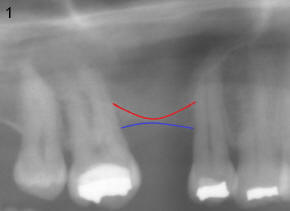
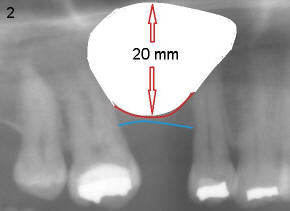
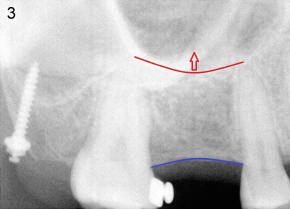
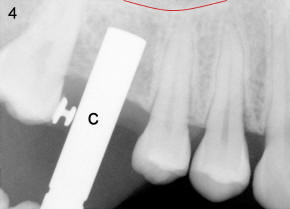
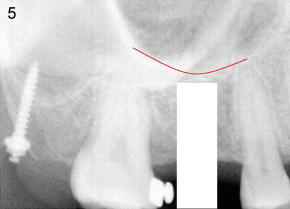
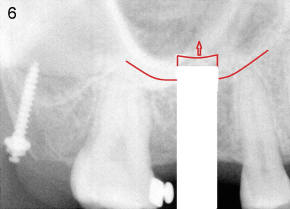
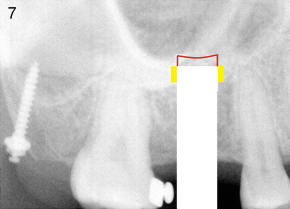
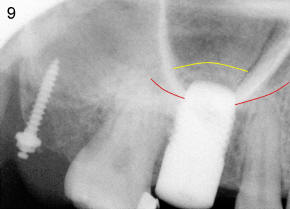
 |
 |
 |
 |
 |
 |
 |
|
 |
Dental Education Lecture: Sinus Lift
When a top back tooth has lost for a long time, there is limited amount of bone left to place an implant (between 2 lines in Fig.1). Bone graft in the sinus is required to increase bone height as much as 20 mm (Fig.2).
When bone height is not reduced much after extraction (between 2 lines in Fig.3, as compared to those in Fig.2), we may want to increase height a little bit, for example 5 mm (arrow in Fig.3, as compared to arrows in Fig.2). The technique to increase small amount bone height is by the means to lift the sinus floor. Initially implant bed is created by drilling or bone expansion using chisel (C in Fig.4). An X-ray film is taken during surgery to see how close the chisel is to sinus floor (red line). When the chisel is about 1 mm from sinus floor (Fig.5), the chisel is tapped gently into the sinus, bringing a piece of bone up with it (green-stick fracture, arrow in Fig.6). Sometimes small amount of bone graft is pushed to implant bed to cover its sides (yellow in Fig.7). Finally an implant is placed (I in Fig.8). In fact, the implant is pushed up into sinus, as compared to the original sinus floor (red line in Fig.9). The sinus floor pushed up with the implant is dome shaped (convex, yellow line), conforming to the shape of bottom portion of the implant. The original shape of this portion of lifted sinus floor is concave (red line in Fig.3-5). Sinus lift may increase implant length by 5-7 mm, which helps stabilize implant and increase its longevity. As compared to sinus graft, sinus lift is more conservative, involving only one surgery. Implant is placed at the same time.
Xin Wei, DDS, PhD, MS 1st edition 03/20/2011, last revision 03/20/2011